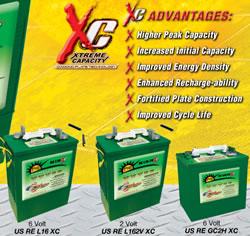One Giant Leap: Celebrating 50 Years of Fuel Cells
Fuel Cells Made Long-Duration Manned Spaceflight a Reality, Helped Spark Today's Fuel Cell Industry
WASHINGTON, DC--(Marketwired - August 21, 2015) - Fifty years ago today, Gemini 5 made history as the first manned spacecraft to utilize fuel cells, allowing the United States to seize the manned spaceflight endurance record from the Soviet Union for the first time, and launching the commercial fuel cell industry.
"Today we are celebrating fifty years of fuel cell deployment, beginning in 1965 with the Gemini 5, the first deployment of fuel cells in a manned flight, achieving the first crucial steps that helped America to land a man on the Moon. This successful historic mission led to the use of fuel cells on all subsequent American manned space missions throughout the Gemini, Apollo, and Space Shuttle programs," says Morry Markowitz, President of the Fuel Cell and Hydrogen Energy Association (FCHEA).
"The initial support of NASA provided the catalyst needed to launch the commercial fuel cell industry. Fuel cell and hydrogen technology has evolved and improved exponentially since then, moving from the rarity of space travel to everyday power for passenger vehicles, forklifts, utilities, businesses, homes, and more," Mr. Markowitz adds. "Today more than 100,000 fuel cell systems generate clean power for people worldwide, a lasting dividend of America's investment in space."
Fuel cell power generation for on-board electronics allowed the Gemini 5 to travel in space for eight days, while also providing drinking water for the astronauts. The mission length was selected as it would be the time required for a lunar landing and return trip to Earth.
Fuel cells utilize hydrogen and oxygen in a chemical reaction, not combustion, to generate electricity. The technology was chosen by the National Aeronautics and Space Administration (NASA) for the Gemini 5 due to the higher efficiency, power density, and reliability, lighter weight, longer runtime, and near-zero emissions compared to other technologies of the time, as well as the added benefit of creating potable water for the astronauts as a by-product.
NASA has continued to support research and development projects using fuel cells and hydrogen fuel to this day, including a fuel cell bus and hydrogen refueling station demonstration by the NASA Glenn Research Center and its Ohio partners. NASA also is developing a light-weight fuel cell technology to meet the expected energy demands for surface exploration vehicles and energy storage on the surface of the Moon or Mars.
"Fifty years ago, NASA chose fuel cells to help America succeed in space, and spurred the commercial development of this cutting-edge technology. Those initial efforts have now borne fruit across the nation, with consumers driving the first commercial fuel cell electric vehicles in California, and stationary fuel cells providing reliable and efficient power to data centers, utilities, warehouses, businesses, and homes around the country," says Mr. Markowitz. "Fuel cells continue to support America's goals to this day, through strengthening our nation's economic, environmental, and national security."
The Fuel Cell and Hydrogen Energy Association (FCHEA) is the trade association for the fuel cell and hydrogen energy industry, representing fuel cell manufacturers, automobile companies, hydrogen and fuel distributors, components and systems manufacturers, government laboratories, and trade associations. Visit us online at www.fchea.org.
Media Contact:
Connor Dolan
Director of External Affairs
cdolan@fchea.org
(202) 261-1331
Featured Product

U.S. BATTERY RENEWABLE ENERGY SERIES DEEP CYCLE BATTERIES
Our RE Series batteries are designed to provide the highest peak capacity, longest cycle life, and greatest reliability for use in industrial or residential renewable energy applications. Renewable Energy Series batteries utilize the company's exclusive XC2™ formulation and Diamond Plate Technology® to create the industry's most efficient battery plates, delivering greater watt-hours per liter and watt-hours per kilogram than any other flooded lead-acid battery in the market. Our Deep Cycle batteries are engineered to work with solar panels as well as other renewable energy applications.
